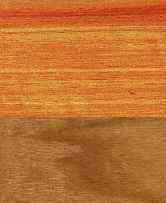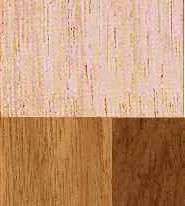 
Arjun (Terminalia arjuna)
Family: Combretaceae
Common names: Arjun, Chasemiich, Esemi, Kil, Kowa, Kumbuk, Kung, Mangi, Sadado, Tellamadi, Tilautaea
Distributed in: India (Oceania and S.E. Asia)
Distribution overview: Terminalia is a large genus consisting of over 200 species of very large trees that occur extensively in the tropical regions of the world. Terminalia arjuna occurs throughout most of India, from Oudh southwards, and is often found along river and stream banks, ravines and dry water beds. It is also reported to grow in southern, western and Central India, Bihar, Orissa, parts of Maharashtra, Tamil Nadu and in Sri Lanka.often planted as an ornamental, and sometimes occurs as an escape in some areas.
Common uses: Beams, Building construction, Building materials, Cabin construction, Clogs, Concrete formwork, Construction, Crossties, Decks, Decorative plywood, Factory construction, Farm vehicles, Form work, Foundation posts, Framing, Handles, Heavy construction, Joists, Light construction, Mine timbers, Plywood, Porch columns, Rafters, Railroad ties, Roofing, Rough construction, Shafts/Handles, Structural plywood, Tool handles, Utility plywood, Wheel spokes, Wheels , Windows
Environment profile: Status has not been officially assessed
Tree size: Tree height is 10-20 m
The tree is large and often buttressed. It develops boles that are sometimes fluted. Boles are seldom long or straight
Colors: the heart isRed, Yellowand the sapwoodPinkish-Gray , Yellow.The grain isStraight, the textureCoarse
Natural durability: Susceptible to attack by some wood destroying insects , Susceptible to insect attack
Odor: No specific smell or taste
Drying Defects: Prone to warping and splitting
Arjun is prone to warping and splitting, although the latter defect is less serious
Ease of Drying: Satisfactory kiln drying
Comments: Generally strong, tough, and hard. It has high calorific value, and is highly suitable for charcoal and as fuelwoodVery heavy
Boring: Fairly difficult to very difficult
Carving: Fairly Difficult to Very Difficult
Cutting Resistance: Moderate to saw
Mortising: Fairly Difficult to Very Difficult
Moulding: Fairly Difficult to Very Difficult
Movement in Service: Fairly Difficult to Very Difficult
Nailing: Fair to Good , Pre-Boring Recommended
Planing: Fairly Difficult to Very Difficult
Resistance to Impregnation: Heartwood responds well to treatment
Heartwood response to treatment is good, but complete penetration may not be always achieved.
Response to hand tools: Responds Poorly
Routing recessing: Fairly Difficult to Very Difficult
Veneering qualities: Suitable for plywood , Suitable for veneers
Screwing: Fairly Easy to Very Easy, Pre-boring recommended; Turning: Very good
Polishing: Takes a lasting polish
;
- Numerical data Metric
- Numerical data English
- Strength properties
- References
 |
 |
 |
 |
| Item |
Green |
Dry |
Metric |
| Specific Gravity |
0,67 |
0,71 |
|
| Density |
|
801 |
kg/m3 |
| Bending Strength |
599 |
869 |
kg/cm2 |
| Crushing Strength |
291 |
428 |
kg/cm2 |
| Hardness |
|
|
kg |
| Impact Strength |
111 |
96 |
cm |
| Shearing Strength |
|
|
kg/cm2 |
| Stiffness |
75 |
95 |
1000 kg/cm2 |
| Tangential Shrinkage |
7 |
|
% |
| Radial Shrinkage |
4 |
|
% |
| Weight |
1137 |
785 |
kg/m3 |
| Maximum Load |
|
|
cm-kg/cm3 |
| Toughness |
|
|
cm-kg |
| Static Bending |
|
|
kg/cm2 |
|
 |  |  |  | | Item | Green | Dry | English | | Bending Strength | 8532 | 12362 | psi | | Density | | 50 | lbs/ft3 | | Impact Strength | 44 | 38 | inches | | Maximum Crushing Strength | 4149 | 6101 | psi | | Stiffness | 1074 | 1362 | 1000 psi | | Specific Gravity | 0.67 | 0.71 | | | Weight | 71 | 49 | lbs/ft3 | | Radial Shrinkage | 4 | | % | | Tangential Shrinkage | 7 | | % | | Volumetric Shrinkage | 12 | | % | |
Very heavy
Dense
Compression strength (parallel to grain) = medium
Bending strength in the air-dry condition (about 12 percent moisture content) is high - comparable to Teak
Limaye, V.D.1954. Grouping of Indian Timbers and their Properties, Uses and Suitability. Indian Forest Records, New Series. Timber Mechanics, Vol. 1, No. 2, Forest Research Institute, Dehra Dun, India.Limaye, V.D. and B.R. Sen. 1953. Weights and Specific Gravities of Indian Woods. Indian Forest Records, New Series. Timber Mechanics, Vol. 1, No. 4, Forest Research Institute, Dehra Dun, India.Rao, K.R. and S.K. Purkayastha. 1972. Indian Woods - Their Identification, Properties and Uses, Volume III - Leguminosae to Combretaceae. Published by the Manager of Publications, Delhi, India.
|









